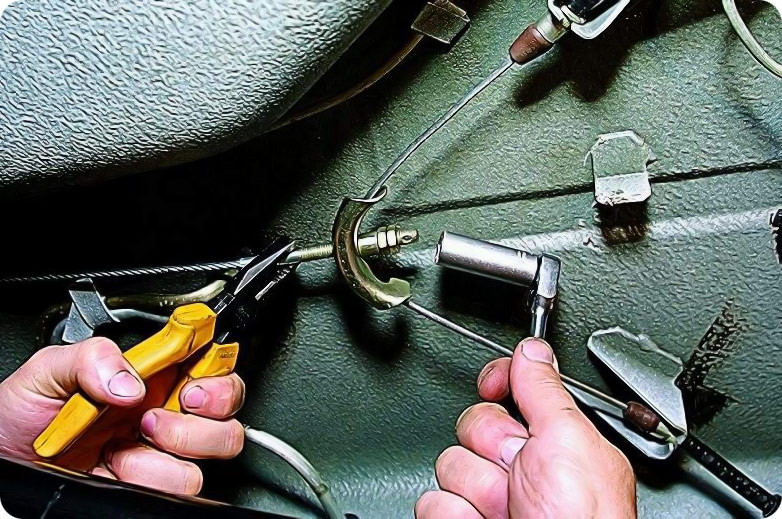The handbrake, also known as the parking brake, is an essential safety component in a vehicle. It prevents the car from moving unintentionally when parked or stopped on an incline. Additionally, a functioning handbrake can serve as an emergency brake in case the main braking system fails.
Over time, handbrake components wear out, and it may lose its effectiveness in keeping the vehicle stationary. Therefore, regular inspection and maintenance of the handbrake are vital aspects of car upkeep.
Signs of a Faulty Handbrake
Before adjusting or repairing the handbrake, it's important to identify the symptoms of its malfunction. Here are the main signs that the handbrake needs attention:
- The handbrake lever sinks or raises too high when engaged.
- The vehicle does not stay in place when the handbrake is engaged.
- The handbrake does not fully release after being disengaged.
If you notice one or more of these signs, it's time to adjust or repair the handbrake.
Preparation for the Job

Before starting the work, it's crucial to prepare. Here’s what you’ll need:
- Your vehicle’s owner’s manual.
- A basic set of tools (pliers, adjustable wrench, etc.).
- Cable lubricant.
- Clean cloth.
Study the instructions for your car model to know exactly how to access the handbrake components and adjust it correctly.
Adjusting the Handbrake: Step-by-Step Instructions

- Inspect and Clean the Cables and Levers. Start with a visual inspection of the handbrake cables and levers for rust, excessive wear, or damage. If necessary, clean these parts from dirt and lubricate the cables.
- Adjust the Cable Tension. Most vehicles have adjustment bolts or screws that allow you to change the cable tension. Follow the manufacturer's instructions for proper adjustment.
- Inspect and Replace the Handbrake Pads. Worn handbrake pads need to be replaced. Check their thickness and inspect for cracks or uneven wear. If necessary, replace the pads with new ones of the type recommended by the manufacturer. After replacing the pads, you may need to readjust the cable tension.
- Final Check. After completing the adjustment and/or replacement of parts, thoroughly check the handbrake's operation. Ensure that the lever does not sag or rise too high when engaged, and that the vehicle remains securely in place. If necessary, repeat the adjustment.
When to Seek Professional Help
For an experienced car owner, adjusting the handbrake might seem like a simple task. However, in some cases, it's better to seek help from professional mechanics:
- If you are unsure of your skills or do not understand the instructions.
- If there are serious damages to the handbrake components.
- If drum brake mechanisms need to be replaced.
Timely maintenance of the handbrake will extend its service life and ensure driving safety.
